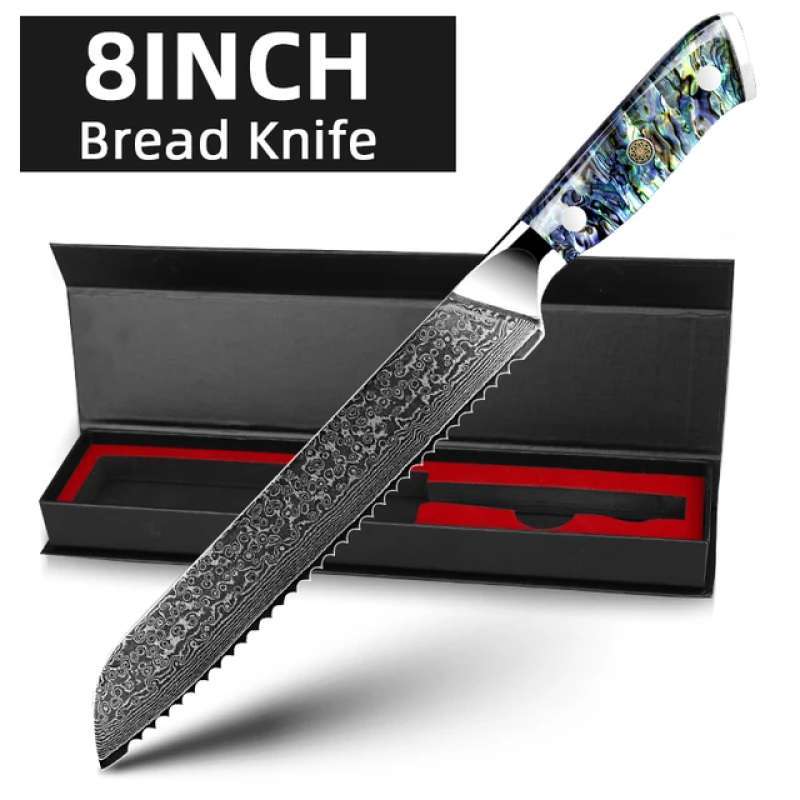Is the pursuit of culinary excellence truly attainable without the right tools at your disposal? The cornerstone of any exceptional kitchen, regardless of its size or the chef wielding the knife, is undoubtedly a high-quality chef's knife.
The quest for the perfect chef's knife often leads to a maze of options: German steel, Japanese steel, Damascus patterns, and more. The sheer variety can be overwhelming. This article delves into the world of chef's knives, exploring their essential qualities, the nuances of different materials, and the brands that stand out, all while aiming to equip you with the knowledge to make an informed decision. It is a deep dive into the cutting edge of culinary tools.
The world of chef's knives is a vast landscape, populated by a diverse array of designs, materials, and manufacturing processes. While the fundamental purpose remains consistent to cut, dice, and mince the specific characteristics of a chef's knife are a matter of personal preference, the nature of the culinary tasks it will undertake, and the overall experience the chef seeks. The quest for the perfect blade often involves a blend of practical considerations and aesthetic desires.
One brand that has garnered attention in this competitive market is Turwho. The brand has made a name for itself by offering a range of knives that attempt to blend both form and function. Turwho, which translates to "expanding" in some contexts, aspires to equip both professional and home chefs with tools that are not only efficient but also beautiful. Turwho is dedicated to be a brand that you can buy rest assured.
Turwho's approach to knife making involves a commitment to quality materials and meticulous workmanship. The companys offerings encompass a variety of knife types, from the ubiquitous chef's knife to specialized tools like sashimi knives and utility knives. This diversification allows Turwho to cater to a broad spectrum of culinary needs, providing options for everything from delicate slicing to heavy-duty chopping.
The brands emphasis on design is evident in its knives. The use of materials such as VG10 Damascus steel and high carbon German steel indicates a desire to provide superior performance and durability. The raindrop pattern, often seen on Damascus steel blades, offers a visually appealing touch, melding artistic elements with the practical requirements of a kitchen tool. The appearance of the knife is a crucial element.
For those seeking to understand the brands positioning in the market, a comparative analysis reveals that Turwho's pricing is considered affordable. The average price point of $54.32 puts it within reach for many home cooks and culinary enthusiasts. This combination of quality construction, aesthetic appeal, and reasonable pricing positions Turwho as an accessible option for those looking to upgrade their kitchen arsenal.
Beyond the individual knives, Turwho offers a complete suite of kitchen knives and accessories. This comprehensive approach suggests the brands commitment to addressing various aspects of culinary preparation. The goal is to be a one-stop shop for cooks.
The brand also attempts to provide solid customer service. Turwho team are online 24 hours, and ready to answer questions. This dedication can go a long way in fostering trust and confidence among customers, encouraging repeat purchases and word-of-mouth referrals.
To provide a detailed understanding of the Turwho brand and its product offerings, the following table summarizes key information:
| Feature | Details |
|---|---|
| Brand Name | Turwho |
| Product Type | Chef knives, utility knives, santoku knives, accessories |
| Materials Used | VG10 Damascus steel, high carbon German steel, various handle materials |
| Design Features | Raindrop pattern, full tang construction, ergonomic handles |
| Price Range | $32.90 to $75.80 |
| Average Price | $54.32 |
| Customer Service | 24-hour online support |
| Availability | Available on Amazon and at the official Turwho store. |
| Key Features | Aesthetic appeal, functional design, quality materials |
| Target Audience | Home cooks, culinary enthusiasts, professional chefs |
| Warranty | Check product details. |
| Shipping | Free shipping to Australia, New Zealand, Canada, and the United States |
The chef's knife, often considered the workhorse of the kitchen, is indispensable for a wide range of tasks. The ideal chef's knife excels in cutting, dicing, and mincing various foods, including fruits, vegetables, and meats. A good chef's knife provides precision and control, making the cooking process more efficient and enjoyable.
When exploring the world of chef's knives, one often encounters questions about the characteristics of Damascus steel blades. While they are undeniably attractive, with their distinctive patterns, the question remains: do they offer any functional advantages over standard forged stainless steel blades? The answer lies in a combination of factors. While the aesthetics of a Damascus blade undoubtedly contribute to its appeal, the layered construction can also enhance its performance. The multiple layers of steel, folded and forged together, can provide increased strength and flexibility, along with improved edge retention. Damascus knives are also known for their exceptional sharpness. Its more than just a pretty face.
The use of high-quality materials is a key factor in determining a knife's overall performance and durability. Both high carbon German steel and VG10 Damascus steel are frequently chosen for high-end chef's knives. The choice between the two involves considering aspects like sharpness, ease of sharpening, and corrosion resistance. German steel is valued for its robustness and ease of maintenance, whereas VG10 Damascus steel is prized for its beauty and edge retention.
The construction of a chef's knife goes beyond the blade material. The handle plays a critical role in the overall balance and comfort. Full tang construction, where the blade extends through the entire handle, is a hallmark of a well-made knife. This construction ensures a secure grip and better balance, giving the chef enhanced control. The handle materials also contribute to the knifes aesthetic appeal. Red sandalwood, for example, is a classic choice that combines natural beauty with durability.
Beyond the traditional chef's knife, other knife types are designed to meet specific needs. The santoku knife, similar to a chef's knife in utility, is slightly shorter and lighter, making it an excellent choice for cooks who prefer a more nimble blade. Utility knives, on the other hand, are indispensable for various small functions in the kitchen. The versatility of these knives underscores the importance of a well-rounded collection.
The importance of a well-curated set of knives cannot be overstated. A good set of knives is an invaluable tool for daily meal preparation. Adding more products to your online shop is an obvious way to increase your sales. Product diversification is one of the strongest ways for companies to grow and strengthen. This helps to increase sales. It's an investment that, with proper care and maintenance, should last for years.
Consumers are increasingly drawn to the aesthetics of chef's knives, particularly those featuring Damascus steel. The rarity and aesthetic appeal of these knives make them a sought-after item for collectors and enthusiasts. The raindrop pattern, a distinctive feature, adds to the visual appeal of the knife, creating a sense of luxury and craftsmanship. Damascus steel, historically made by Islamic metalsmiths, has a rich history. The beauty of the blade, combined with the quality of the build, makes Damascus knives more desirable.
The quest for the perfect chef's knife is a journey that blends functionality and aesthetics. The ideal knife enhances the cooking experience. Whether it's the robust performance of German steel or the artistic beauty of a Damascus blade, the right chef's knife empowers every cook, from the novice to the professional. With the right selection, the art of cooking flourishes, one perfectly sliced tomato or flawlessly diced potato at a time.



